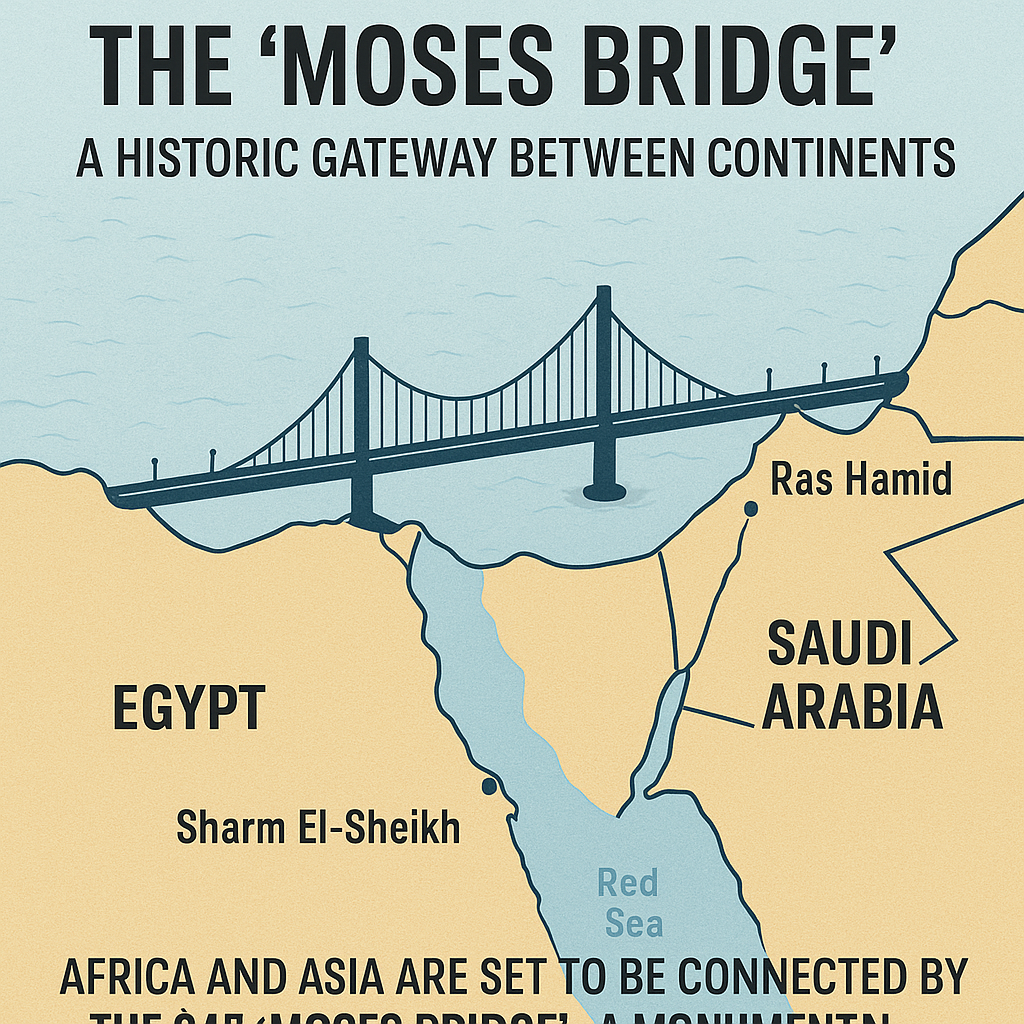This visionary causeway would link Saudi Arabia to Egypt across the Strait of Tiran via a 32-kilometre road and rail network, creating a strategic transcontinental bridge between Asia and Africa.

If completed, the Moses Bridge would not only symbolise a modern echo of biblical legend—it would become the first direct overland connection between the two continents across the Red Sea. Far beyond its symbolism, it carries profound economic, strategic, and geopolitical implications.
A Cornerstone for Vision 2030
At the heart of the Moses Bridge’s importance lies its alignment with Saudi Arabia’s Vision 2030—a national transformation programme aimed at diversifying the economy and positioning the Kingdom as a global hub connecting Asia, Africa, and Europe.
By physically linking Saudi Arabia and Egypt, the causeway would reinforce the Kingdom’s strategic positioning in global logistics and travel. Journey times between the two countries could be reduced to under 30 minutes by car, creating new dynamics in cross-border tourism, trade, and cultural exchange.
One early projection suggests that tourist arrivals from Saudi Arabia to Egypt could quadruple—from 300,000 to over 1.2 million annually—thanks to ease of access to destinations like Sinai’s resort towns. On the reverse route, Egyptian travellers and pilgrims would gain a new direct passage to northwestern Saudi Arabia—home to NEOM, the futuristic $500 billion smart city, and a network of Red Sea resorts designed to attract global tourists.
Strengthening Trade and Transport
The bridge’s potential extends well beyond tourism. Designed to support both vehicular and rail traffic, it would enable seamless freight and passenger transport between the continents. By connecting national railway networks, the Moses Bridge could serve as a backbone for a new Asia–Africa–Europe overland trade corridor.
This would embed Saudi Arabia deeper into global supply chains, allowing goods to move from the Arabian Peninsula into North Africa and eventually into European markets—enhancing the Kingdom’s role as a logistics powerhouse. The bridge complements other infrastructure investments under Vision 2030 and could serve over a million travellers and pilgrims annually.
The expected cost—around USD 4 billion—would be funded by Riyadh, with returns anticipated through tolls, increased trade, and regional development. The project is also projected to generate thousands of jobs across both nations and accelerate growth in Saudi Arabia’s underdeveloped Tabuk region.
Source: Global Business Outlook